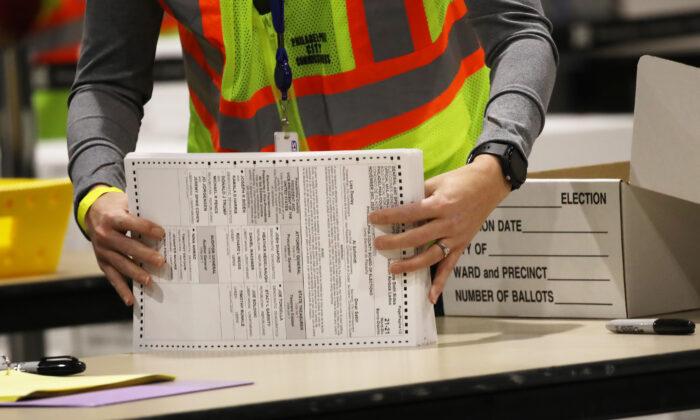U.S. Supreme Court Justice Samuel Alito late Friday ordered Pennsylvania election officials to segregate ballots that arrived after Election Day.
Alito granted a request by the state’s Republican Party to separate mail-in ballots received between 8 p.m. on Nov. 3 and 5 p.m. on Nov. 6 from those that arrived by 8 p.m. on Nov. 3, in accordance with state guidance.
The justice, however, did not order the counties to stop counting but instead ordered that “all such ballots, if counted, be counted separately.”
Alito also directed any responses to the application by 2 p.m. on Nov. 7.
Moreover, Boockvar’s guidance is not legally binding on county boards of elections, which means the counties may choose not to follow the guidance, the party added.

‘Modified’ Guidance
Alito said in his order that he had not been informed that the guidance issued on Oct. 28, “which had an important bearing on the question whether to order special treatment of the ballots in question,” had been “modified.”They noted that the Nov. 1 guidance differed from the Oct. 28 guidance with respect to counting late-arriving ballots.
The guidance issued on Nov. 1 said that the county board of elections “shall canvass segregated absentee and mail-in ballots” received between 8 p.m. on Nov. 3 and 5 p.m. on Nov. 6 “as soon as possible upon receipt of the ballots and within the period specified by law for the canvass. The canvass meeting shall continue until all segregated absentee and mail-in ballots have been canvassed.”
This differed from Boockvar’s original guidance issued on Oct. 28, which said that the county board of elections “shall not pre-canvass or canvass any mail-in or civilian absentee ballots” received in the same time frame, “until further direction is received.” The original guidance also said that the ballots “shall be maintained by the county board in a secure, safe, and sealed container separate from other voted ballots.”
Republicans alleged, “Thus, the secretary has purported to direct county boards to count ballots that the General Assembly has directed are invalid and should not be counted,” they asserted.

“In short, an order from the court is badly needed,“ the Republicans wrote. ”But given some county boards’ refusal to confirm that they are segregating ballots and the secretary’s changing guidance, an order requiring segregation of ballots may not suffice to preserve RPP’s appellate rights.”
They added, “An order at this juncture is necessary to preserve this court’s jurisdiction to resolve this matter on the merits, as well as its ability to enter an appropriate remedy for this general election.”
The Supreme Court has yet to decide on whether to review the case at hand.
Ballot Deadline Extension Case
The Pennsylvania Supreme Court, which has a 5-2 Democratic majority, had ruled on Sept. 17 that election officials can accept all mail-in ballots, including absentee ballots, up to three days after the Nov. 3 election.The ruling said that ballots received on or before 5:00 p.m. on Nov. 6 that lack a postmark, a legible postmark, or other proof of mailing can still be counted and “will be presumed to have been mailed by Election Day unless a preponderance of the evidence demonstrates that it was mailed after Election Day.”
Republicans, including Trump’s campaign, have opposed such an extension, arguing that it violates federal law and that such a decision constitutionally belongs to lawmakers, not the courts.




